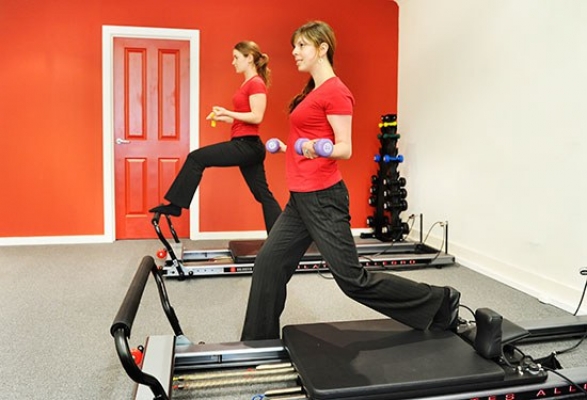Pilates, named after its founder Joseph Pilates, was first utilized in England, during the First World War as a means of rehabilitating injured soldiers. Joseph Pilates attached springs to the hospital beds to support and provide resistance for the patient’s limbs.
In 1926, he relocated to New York with his wife, where they opened their own ‘body-conditioning gym’. They continued to teach the Pilates method, which quickly become a popular form of exercise, especially with the dance community. While Pilates now has the reputation of being a more female-oriented form of exercise, 60% of Joseph’s initial clientele were men. It certainly wasn’t intended to favour one sex over the other and still is highly suitable for both genders.
Pilates is used for rehabilitation purposes as well as to improve general health & fitness.
1. What is the difference between general Pilates and Clinical Pilates?
These days there seems to be a Pilates studio on every second corner. It can be confusing to differentiate what is Clinical Pilates and what isn’t. Essentially, Clinical Pilates is run by a trained healthcare professional, typically a physiotherapist.
So is non-Clinical Pilates bad for you then? No, it certainly isn’t ‘bad,’ but it won’t necessarily be specific to your condition and/or abilities. Most importantly, the instructor may not be qualified to deal with, or even have a proper understanding of the condition you are requiring to treat. Clinical Pilates will ensure that you are in well trained and knowledgeable hands. Someone that can help you become fit and active, but also understands your underlying injury or disease. They liaise with other health professionals, such as your doctor, to ensure you are receiving the best care.
Clinical Pilates, unlike general Pilates, should also involve Real Time Ultrasound. This is used to assess the strength and control of the core stabilizers of the lower back and stomach; it allows both the physiotherapist and the individual to see how the muscles work on the screen. This will ensure correct activation of the muscles and hence lead to a marked improvement of the core muscle strength and control. This will in turn, result in reduction and prevention of back pain.
2. What conditions is Clinical Pilates useful for?
As stressed in many previous articles, exercise has an enormous number of benefits, positively impacting people with many different injuries or diseases.
Some of the problems Clinical Pilates can help treat and manage are:
- Neck and back pain
- Joint injuries (shoulders, hips, knees, ankles and more)
- Arthritis
- Scoliosis
- Incontinence
- Cardiovascular conditions (Coronary Heart Disease, heart failure, stroke and others)
- Neurological conditions (Multiple Sclerosis, Parkinson’s Disease, brain or spinal trauma)
- People at risk of falls and those who are generally in low physical condition
Exercise has an enormous number of benefits.
3. Are there any precautions?
Pilates is generally suitable for people of all ages and abilities. Nonetheless, certain considerations need to be made. Where this is the case it is particularly important to do Clinical Pilates rather than ordinary Pilates as the sessions will be conducted under the supervision of physiotherapists, leaving no room for mistakes to be made.
For example, while Pilates is an excellent form of exercise for pregnant women, it is not recommended for women beyond the first trimester to spend prolonged periods lying on their back. The program will therefore have to avoid exercises utilising this position.
Additionally, while Pilates is a great way to improve control, balance and strength, some exercises can be challenging. For those who are at risk of falls, such as elderly people, it is important that they are supervised closely to avoid any adverse events. Again, the program needs to be tailored specifically to them.
When it comes to certain conditions, such as various heart-related conditions, there are limits to the intensity with which an individual should exercise. It is important to monitor the exertion levels of the individual, based on subjective feedback and also using measures such as heart and breathing rate if required.
The best way to make sure that the program meets the needs of each individual person is to start by carrying out a detailed full body diagnostic assessment. This should include an assessment of posture, muscle strength, flexibility, range of motion and ligament integrity as well as the medical history.
It is also important to discuss the goals of each individual and the type of exercise they are already doing. The Clinical Pilates program should consequently be based on the outcomes of the assessment. To make sure that the person’s condition is improving and that his/her goals are being met, regular reassessments should be carried out to track the treatment progress and make any necessary adjustments to the program. It is most important to check your health and fitness with a GP before you commence any type of exercise regime.

